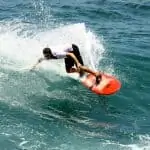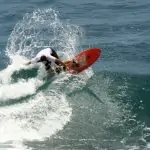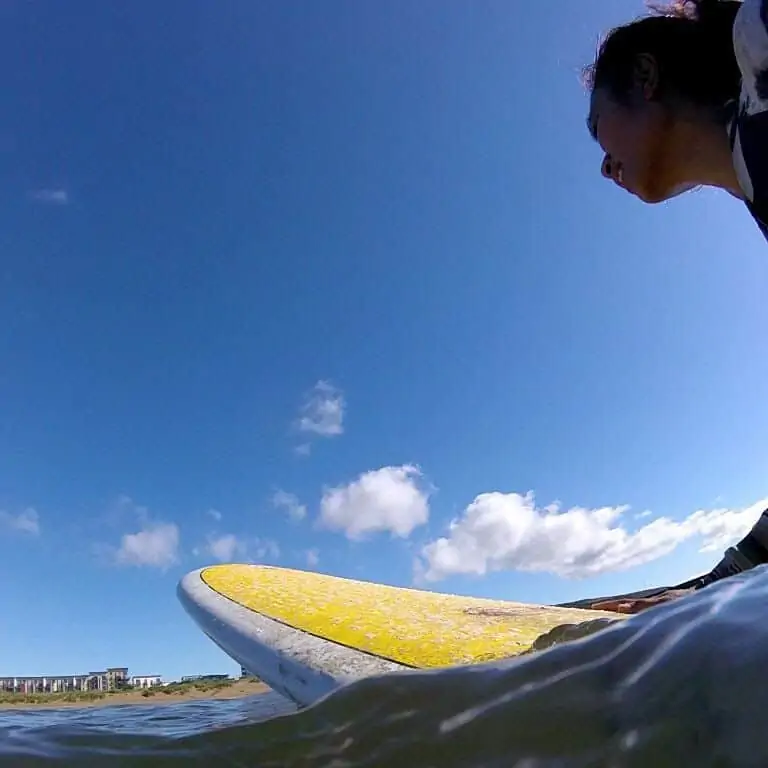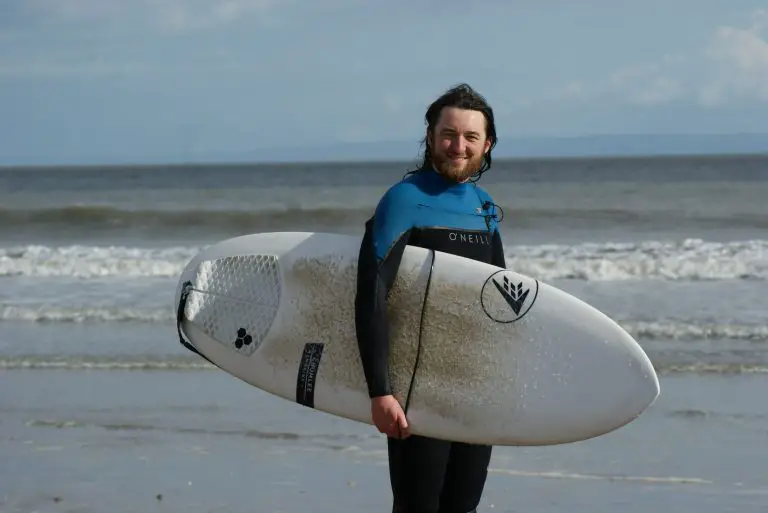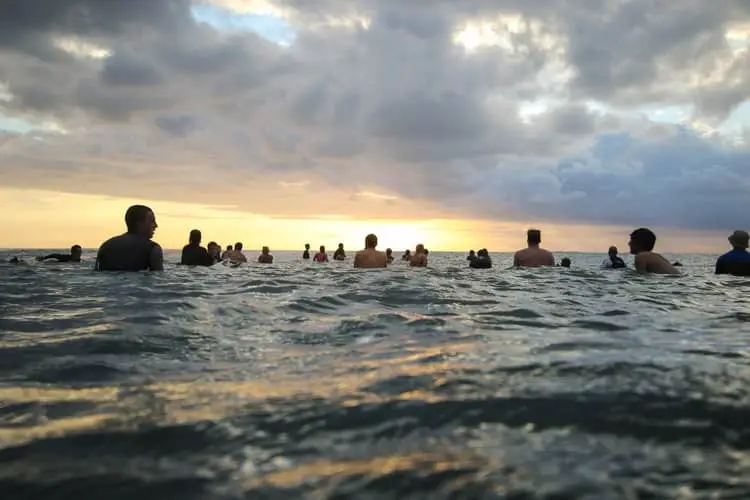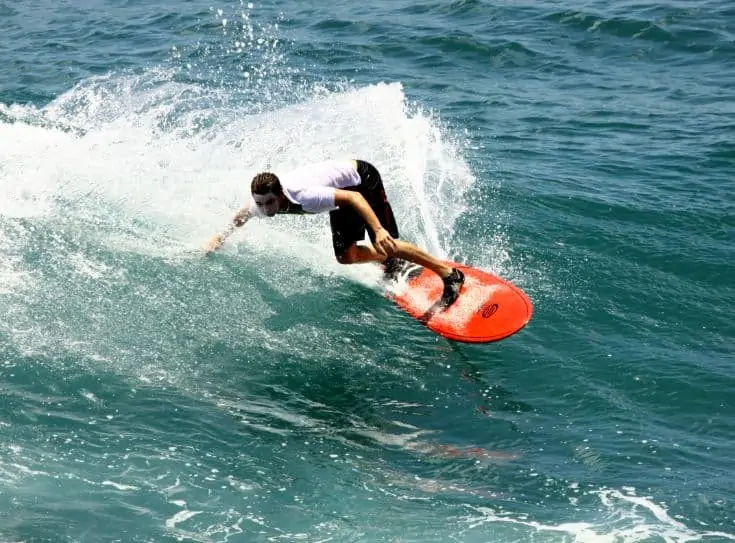Swimming and Surfing: Do You Have to Be a Good Swimmer?
Being an ocean-going sport, surfing fitness is synonymous with being able to swim. The benefits of being able to swim are obvious since being out in the water in an unsafe environment will make it a huge help.
However, not everyone has learned how to swim when they were younger or has the time and options, with some people wanting to get straight into surfing.
So, do you have to be a good swimmer to surf? No, you don’t have to be a good swimmer but it certainly helps. Since your board will float you, you really need to know how to paddle and control your surfboard. That being said, there are still a few caveats, as we’ll explore below.
Does swimming help with surfing?
Yes, there is no doubt that having a good swimming ability helps you with surfing in several key ways.
The first is with confidence; if you know that you are a strong swimmer, you will be able to focus more time and energy on learning to surf and catching waves, which is what you are there to do in the first place.
Being out in the surf is a new experience for all and can be quite unsettling, so having any added level of confidence certainly helps when trying to surf.
Being a good swimmer also helps when you lose your board, as can happen quite easily. If you are in decent waves, or even if you just have poor equipment, it’s common that you can get separated from your board with either the leash coming undone or breaking.
This would then need you to swim in to shore, so swimming here is extremely helpful and, let’s be honest, a life saver. Obviously, you shouldn’t be out in these conditions if you can’t swim, as we’ll look at in more detail in a section below in this article.
There’s another point here about currents and rips when you are out in the surf. These are not visible and can take you far out to sea or even into the more dangerous waves, called the ‘impact zone’.
Being a good swimmer when you encounter rips and currents is helpful because it will give you the strength and fitness in your paddling to paddle back towards shore.
This is largely because the fitness you get from swimming is a huge help when it comes to paddling on a surfboard.
Now, you can overcome this by paddling around on your surfboard a lot or by doing other exercises, but it certainly helps massively in the early days when learning to surf.
There is one other way in which swimming helps with surfing, namely when coming back up to the surface from a wipeout.
If a rogue wave dumps on you, as is common in surfing, it might push you under the surface for a while for what surfers call a ‘hold down’. You will then need to swim back to the surface and hold your breath all the while. These are obviously two techniques that learning to swim can really help you with as swimmers do these in pools all the time and will therefore be more prepared and calmer for these situations when they happen out in the surf.
Again, you will only probably be in for a hold down if you head out into bigger waves or further from shore, so if you use common sense and good judgement, this won’t be such an issue for you.
Can You Surf Without Knowing How to Swim?
Yes, you can definitely surf without knowing how to swim, but it is not ideal. That said, if you are intent on going surfing as a non-swimmer, then you need to always bear in mind a few key things.
Firstly, definitely have a surf lesson to start, no ifs and no buts. This is because without knowing how to swim, you need to get some expert advice on learning from the beginning, which a surf lesson will give you.
You may only need one 2-hour surf lesson to get the most value from it, but it will be worth it since they will run through all the key safety points while also supervising you for the first time that you go out into the sea.
This will give you a fast-track approach to learning to surf while also letting you try it in a safe environment, which is probably worth the cost of the lesson alone. From there, you can then decide if you think that it’s worth continuing and have an idea of the main things to think about and look for when you go surfing in future.
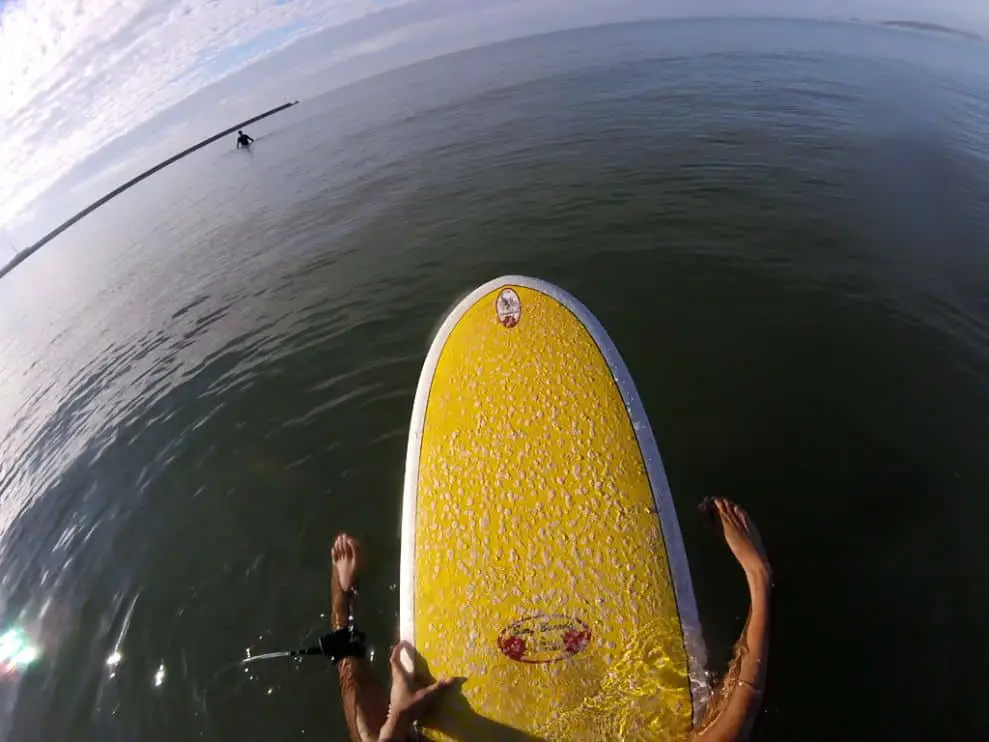
The next main point to remember is to know your limits! By this, I mean that you should remain aware of your limited/zero ability to swim. Having this in mind will then help you to decide on the safest and best spots to learn to surf.
The best waves for those who are non-swimmers or less confident are most certainly small waves. This is because the power of these waves will be less, making it less of a problem for you when you fall off your board or wipeout.
Along with this, waves that break close to shore are also ideal. This again links in with the earlier points about losing your board when out in the surf. If this happens but you are close to shore, it’s not such an issue as you should be able to get back in to shore quite easily.
Choosing small waves that break closer to shore should also reduce the chance of there being any strong currents or rips, although it is best to simply ask others at the beach before paddling out.
There might also be signs with warnings to notify swimmers and surfers about such currents, so remain aware and use your common sense to avoid any issues here. You might also find that surfing on an incoming tide might also reduce the chances of rips pulling you out to sea, but that again would be one to confirm at your chosen spot as each spot is different with its own currents and hazards.
You can also get an idea of how safe a given surf spot is by the amount of surf schools that there are and when and in what conditions they operate.
If there are not any surf schools, then it might be unsafe to surf if you are not a good swimmer. Equally, if the surf schools don’t run lessons around low tide, for example, it might be because there are hazards such as strong rips or shallow rocks beneath the surface to be avoided. You can obviously find that out by either speaking to them or just watching from afar, but take notice of what they do and how they operate.
As a general rule, try to surf only at beach breaks, which are waves that break over sand on beaches. These will usually have the mellowest waves and match all of the criteria above, helping you to stay safe even if you can’t swim.
Last thing is to surf with crowds since there is safety in numbers. If you are not a confident swimmer, the worst thing you can do is paddle out into the surf alone. Although you should never need to rely on others to help or save you, having people around will certainly be a huge boost if you do have an accident or issues with your surfboard during a session.
Related Questions
Can you surf with a life jacket? No, you can’t surf with a life jacket since they make paddling very difficult and uncomfortable given the bulk padding. That said, some surf brands have inflatable safety vests now but these are more for advanced or professional surfers who are looking to ride big waves.
As such, any specially designed inflatable safety jacket for surfing is not for novices and may require some form of contract to be able to purchase one. They are, as the manufacturers state, no substitute for appropriate knowledge, a good level of fitness and large amounts of experience.
How far out in the ocean do surfers go? Surfers usually go up to 100m offshore when riding waves, although this depends on the type of wave. Most beaches have waves that break close to shore, although this is further with bigger waves, while reefs and point breaks break close to the rocks that cause them to form.

